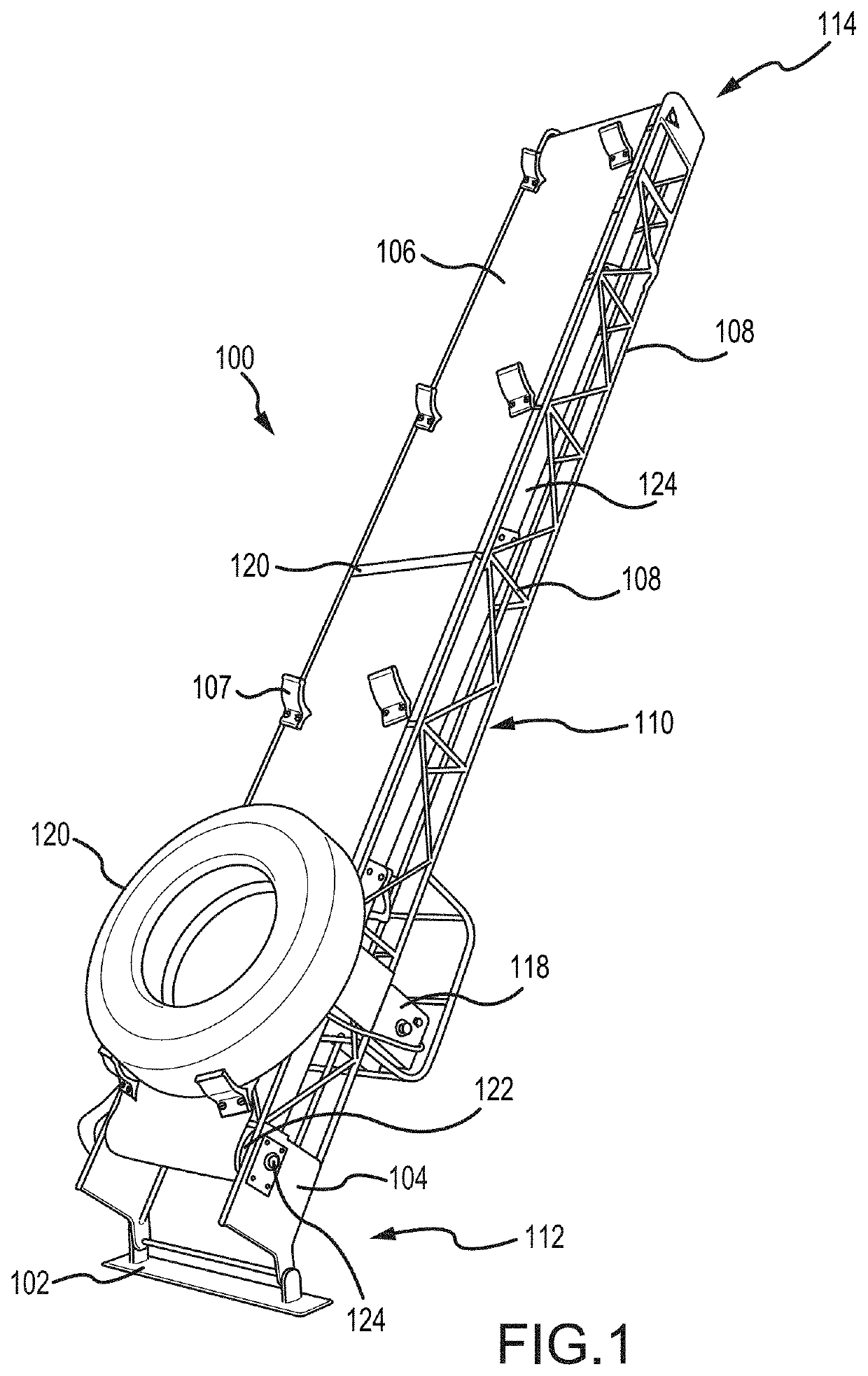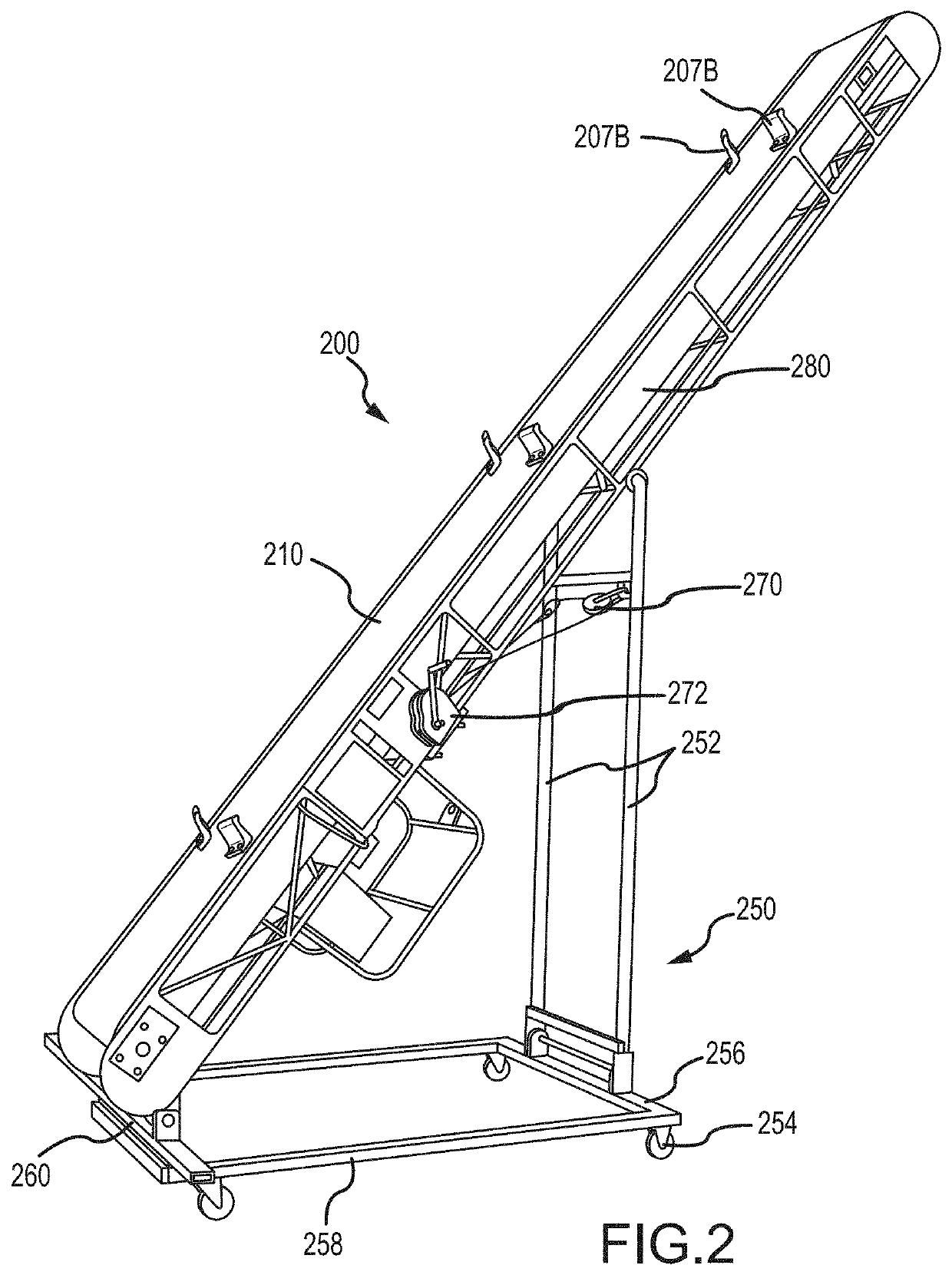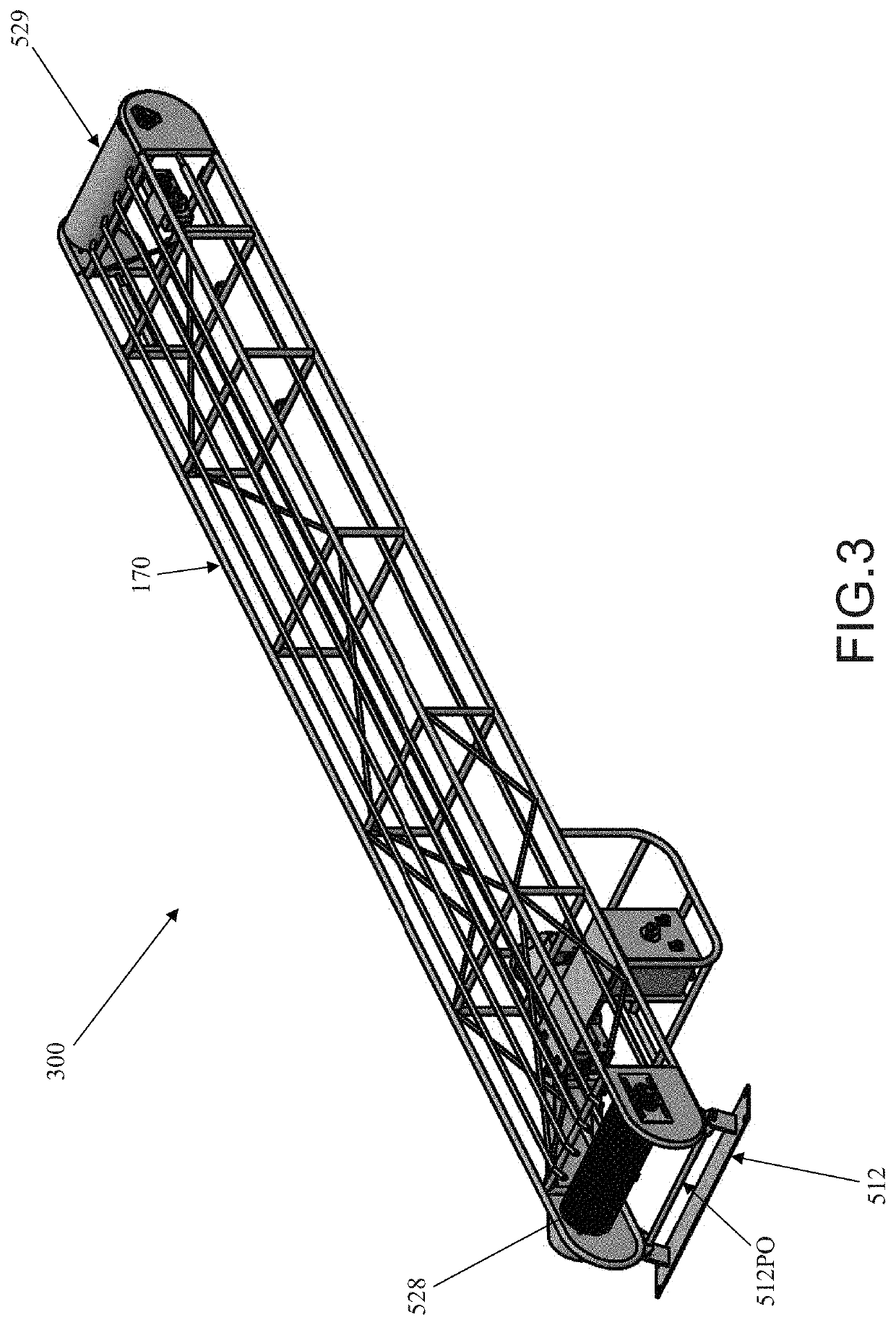Method and system for conveying articles and an apparatus for doing the same
a technology of conveyors and articles, applied in the direction of conveyor parts, sorting, storage devices, etc., can solve the problems of occupying valuable floor space, reducing the efficiency of conveyors, and reducing so as to facilitate the efficiency of tire loading, unloading and/or storage, and reduce the level of inventory
- Summary
- Abstract
- Description
- Claims
- Application Information
AI Technical Summary
Benefits of technology
Problems solved by technology
Method used
Image
Examples
second embodiment
[0231]FIG. 29 is a system 2900 of conveyors 2600. Each conveyor 2600 comprises a belt, a plurality of cleats 2604, support bars 2608 forming a support frame, handles 2602A, and a receiving hopper 2664 with an inner funnel-shaped portion 2666.
[0232]FIG. 30 shows one embodiment of a first conveyor resting on an upper end on a second conveyor. The first conveyor comprises a belt 2606, support bars 2608 forming a support frame, a plurality of cleats 2604, a receiving hopper 2664, and handles 2602A, 2602B. The handles can include one or more upper handles 2602B and one or more lower handles 2602A. The receiving hopper 2664 has an inner surface 2666 for funneling items onto the conveyor belt 2606. The plurality of cleats 2604 may comprise multiple groups of cleats, where each group of cleats comprises a left cleat 2604A, a right cleat 2604B, and a center cleat 2604C.
[0233]FIG. 31 shows a second embodiment of a conveyor 3100. The conveyor 3100 comprises a belt 3106, a support frame 3108, a...
third embodiment
[0234]FIG. 32 shows a conveyor 3200. The conveyor 3200 comprises a belt 3206, a support frame 3208, a plurality of cleats 3204, and handles 3202B. The conveyor 3200 can further include one or more lower handles (not shown) that look and perform similar to the upper handles 3202. The plurality of cleats 3204 may comprise multiple groups of cleats, where each group of cleats comprises a left cleat 3204A, a right cleat 3204B, and a center cleat 3204C.
[0235]FIG. 33 shows a third embodiment of a conveyor system 3300 comprising two or more conveyors. Each conveyor in the system 3300 comprises at least one of a belt 3306, a support frame 3308, a plurality of cleats 3304, and a receiving hopper 3334. The conveyors can further include one or more handles. The plurality of cleats 3304 may comprise multiple groups of cleats, where each group of cleats comprises a left cleat 3304A, a right cleat 3304B, and a center cleat 3304C. The cleats 3304A, 3304B, 3304C can be shaped similar to any of the ...
fourth embodiment
[0237]FIG. 35 shows a conveyor system 3500 comprising multiple conveyors. Each conveyor in the system 3500 comprises at least one of a belt 3506, a support frame 3508, a plurality of cleats 3504, and a receiving hopper. The conveyors can further include one or more handles. The plurality of cleats 3504 may comprise multiple groups of cleats, where each group of cleats comprises a left cleat 3504A, a right cleat 3504B, and a center cleat 3504C. The cleats 3504A, 3504B, 3504C can be shaped similar to any of the cleats disclosed herein.
[0238]FIGS. 36A-C show an embodiment of a straight vertical tire conveyor (“VTC”) 3600, where FIG. 36A is a perspective view, FIG. 36B is a front view, and FIG. 36C is a side view of the straight vertical tire conveyor 3600. The VTC 3600 has a bottom end 3612, which is the idle end in some embodiments, and a top end 3614, which is the drive end in some embodiments. The drive end 3614 comprises a motor 3650 positioned within the frame 3608. The VTC 3600 c...
PUM
 Login to View More
Login to View More Abstract
Description
Claims
Application Information
 Login to View More
Login to View More - R&D
- Intellectual Property
- Life Sciences
- Materials
- Tech Scout
- Unparalleled Data Quality
- Higher Quality Content
- 60% Fewer Hallucinations
Browse by: Latest US Patents, China's latest patents, Technical Efficacy Thesaurus, Application Domain, Technology Topic, Popular Technical Reports.
© 2025 PatSnap. All rights reserved.Legal|Privacy policy|Modern Slavery Act Transparency Statement|Sitemap|About US| Contact US: help@patsnap.com



